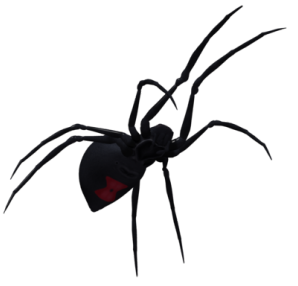Theraphosidae (family)
Theraphosidae (Family) Theraphosidae, commonly known as tarantulas, is a family of large and often hairy spiders belonging to the order Araneae. With over 1,000 described species, they are one of…
Grammostola porteri (Chilean Rose Hair)
Grammostola porteri (Chilean Rose Hair Tarantula) Country of Origin: Chile Natural Environment and Behavior: Grammostola porteri, commonly known as the Chilean Rose Tarantula, is a species native to the semi-arid…
Davus (genus)
Davus (Genus) Davus….
Brachypelma emilia (Mexican Redleg Tarantula)
Brachypelma emilia (Mexican Redleg Tarantula) Country of Origin: Mexico The Name:The genus name “Brachypelma” comes from the Greek words “brachys,” meaning “short,” and “pelma,” meaning “foot,” referring to its stout…
Pisauridae (genus)
The Pisauridae family, commonly known as the nursery web spiders, comprises a diverse group of spiders found worldwide, with a significant presence in temperate regions. This family includes approximately 500…
Pisaura mirabilis (Nursery Web Spider)
Pisaura mirabilis (Nursery web spider) Origin: Palearctic distribution (Europe, Canary Islands and Madeira, the Asian part of Russia, China and North Africa) The Name:The genus name “Pisaura” comes from Latin,…
Tliltocatl kahlenbergi (Veracruz Red Rump)
Tliltocatl kahlenbergi (Veracruz Red Rump) Country of Origin: Mexico Natural Environment and Behavior: Tliltocatl kahlenbergi, formerly known as Brachypelma kahlenbergi, is a fascinating species of tarantula indigenous to Mexico, specifically found in…
Pterinochilus (genus)
Pterinochilus (Genus) The Pterinochilus genus, a member of the Theraphosidae family, is indigenous to diverse regions of Africa, with notable occurrences in countries such as Tanzania. These tarantulas, often recognized…
Pterinochilus murinus (Orange Baboon Tarantula)
Country of Origin: Mexico Natural Environment and Behavior: Pterinochilus murinus, commonly known as the Orange Baboon Tarantula (OBT) or “Usambara red,” hails from the semi-arid to arid regions of East Africa,…
Brachypelma boehmei (Mexican Fireleg)
Brachypelma boehmei (Mexican Fireleg Tarantula) Country of Origin: Mexico The Name:The genus name “Brachypelma” is derived from Greek, where “brachy” means “short” and “pelma” means “sole of the foot,” reflecting…

